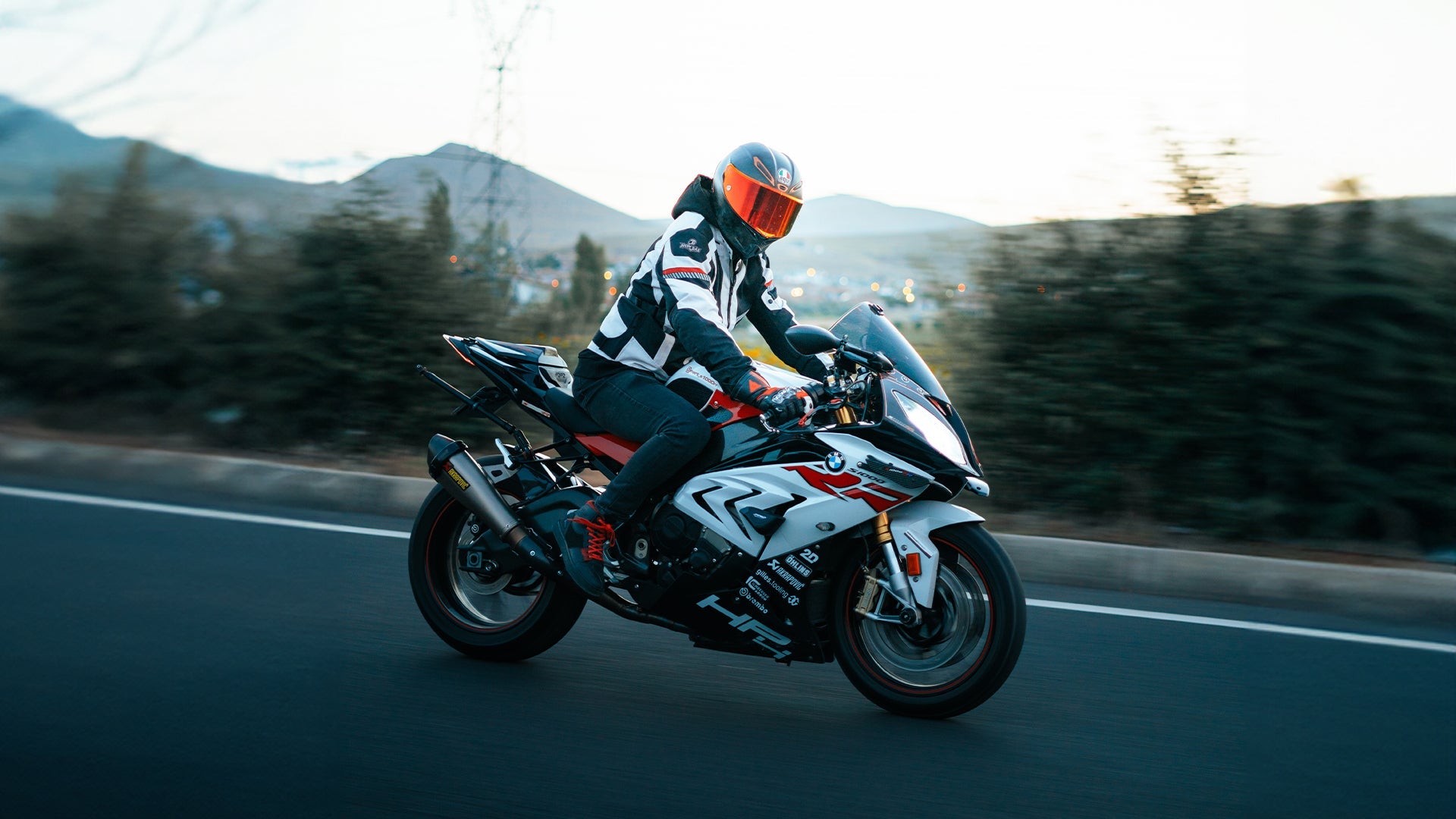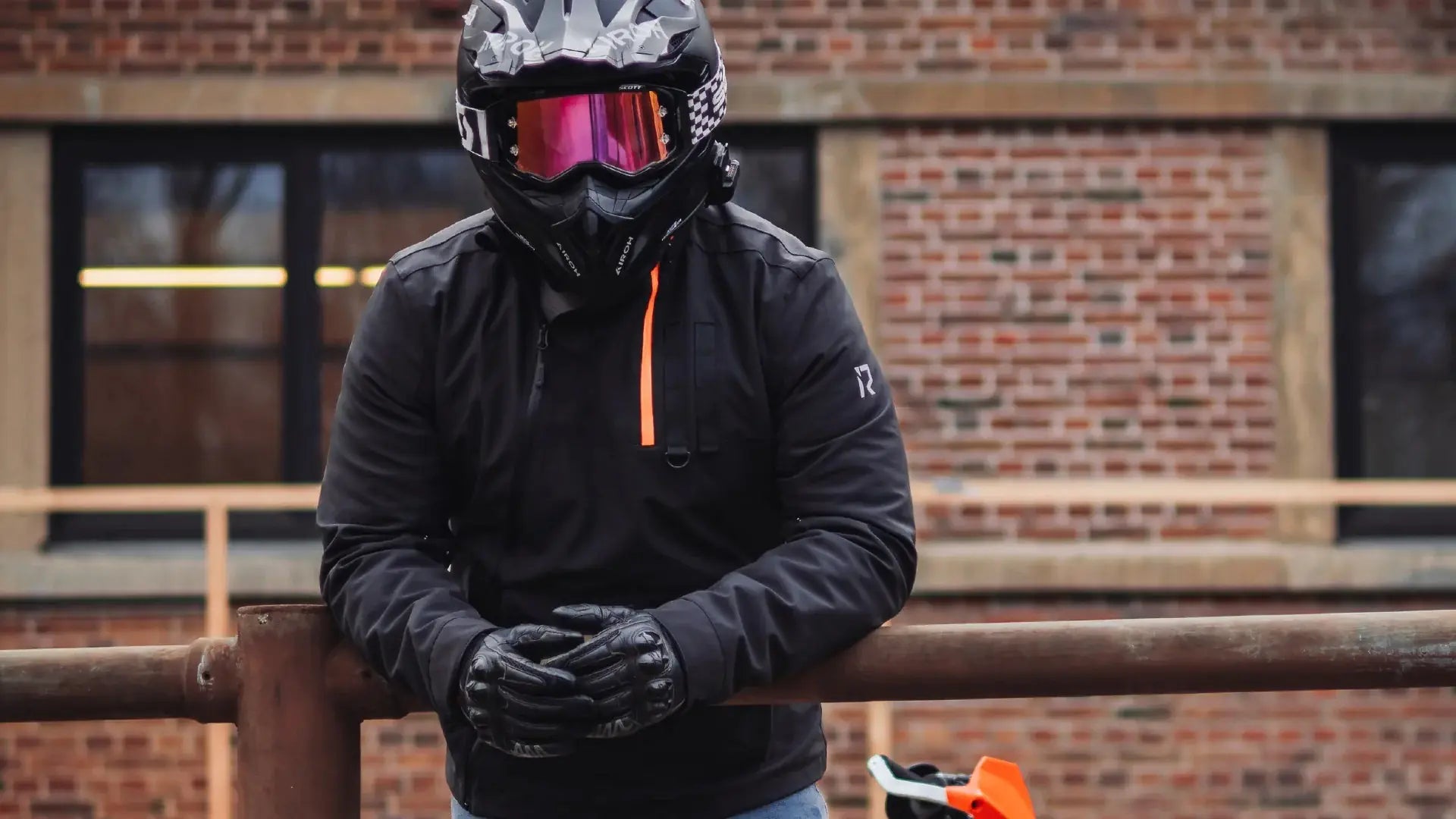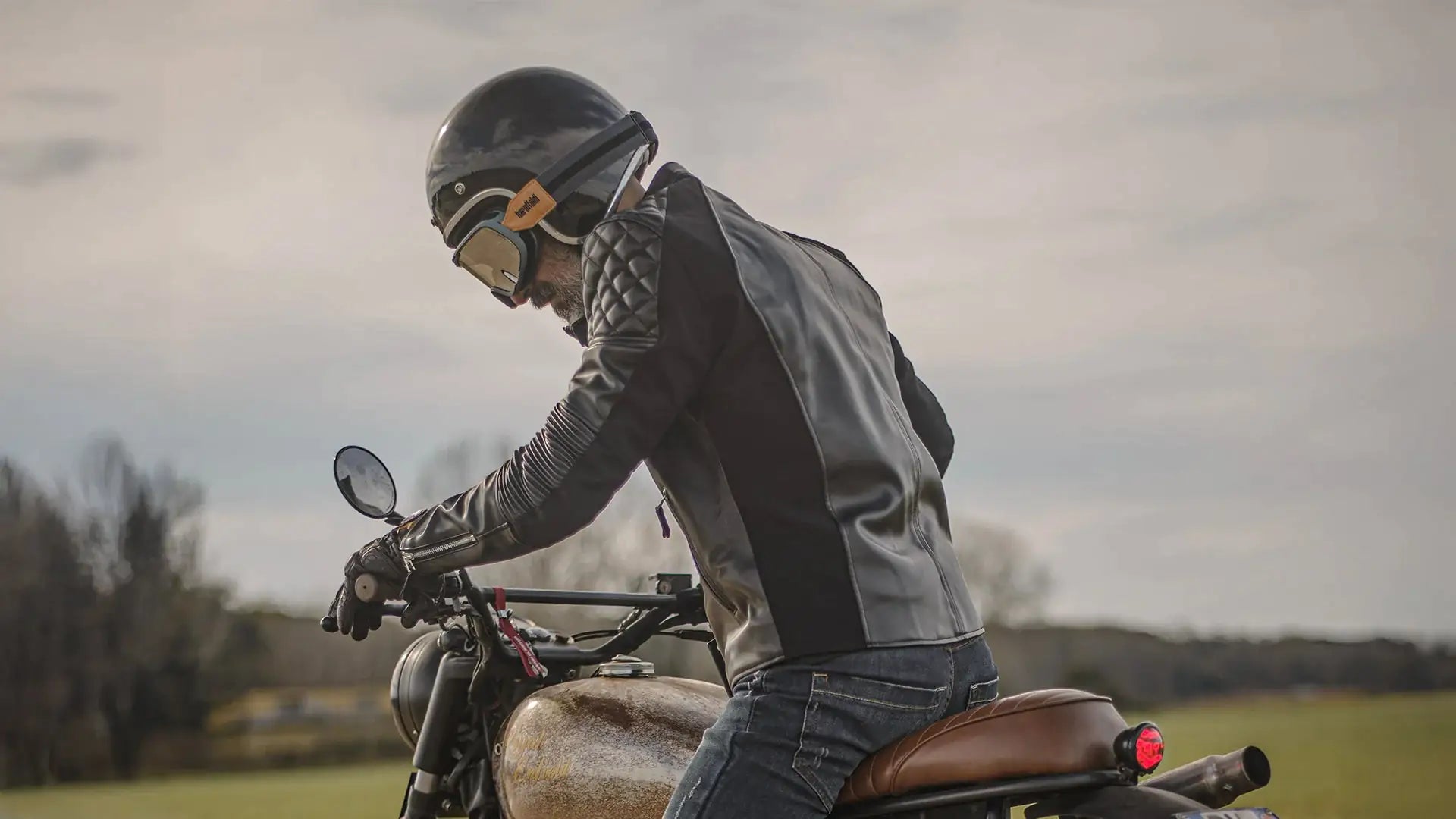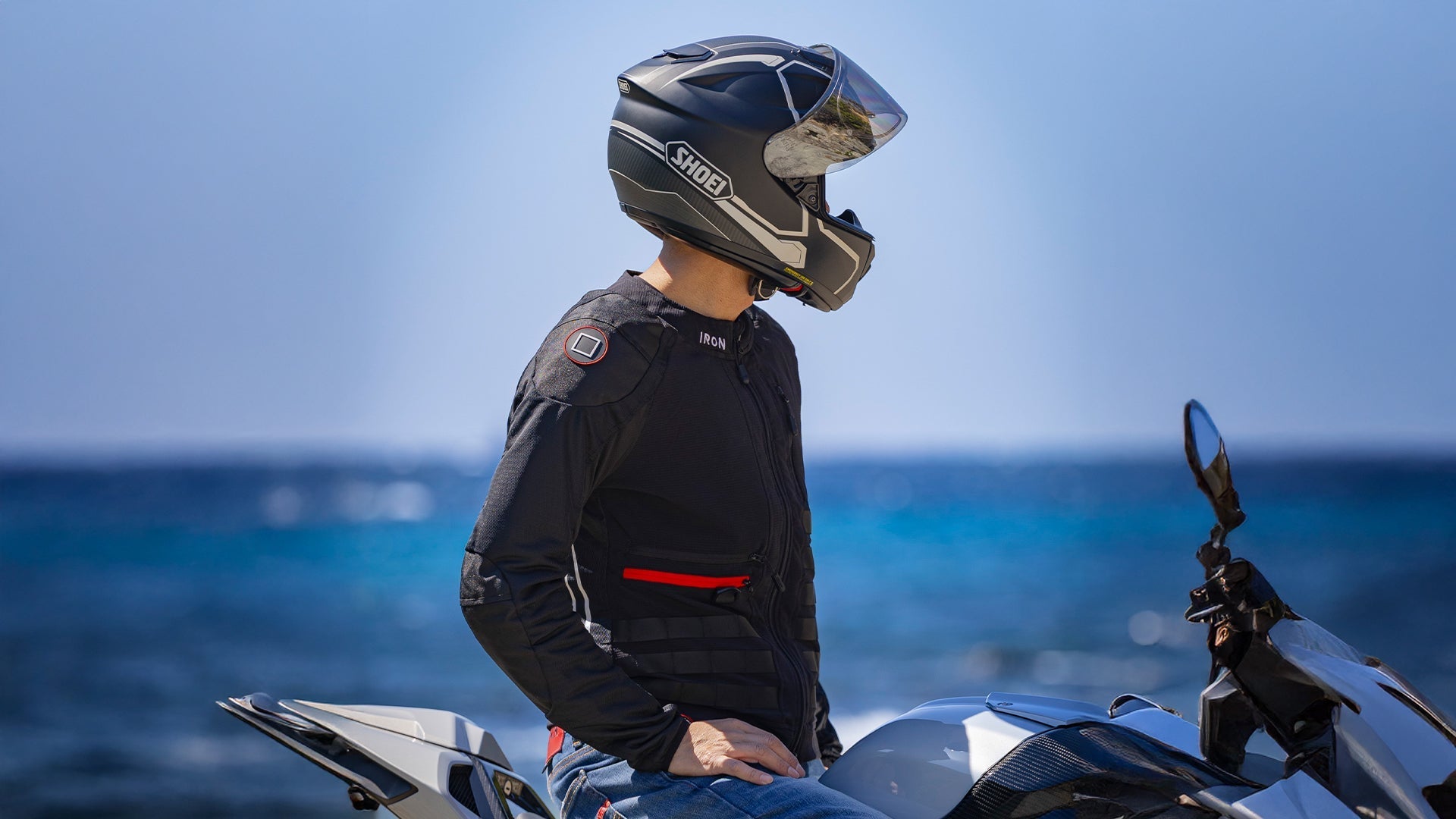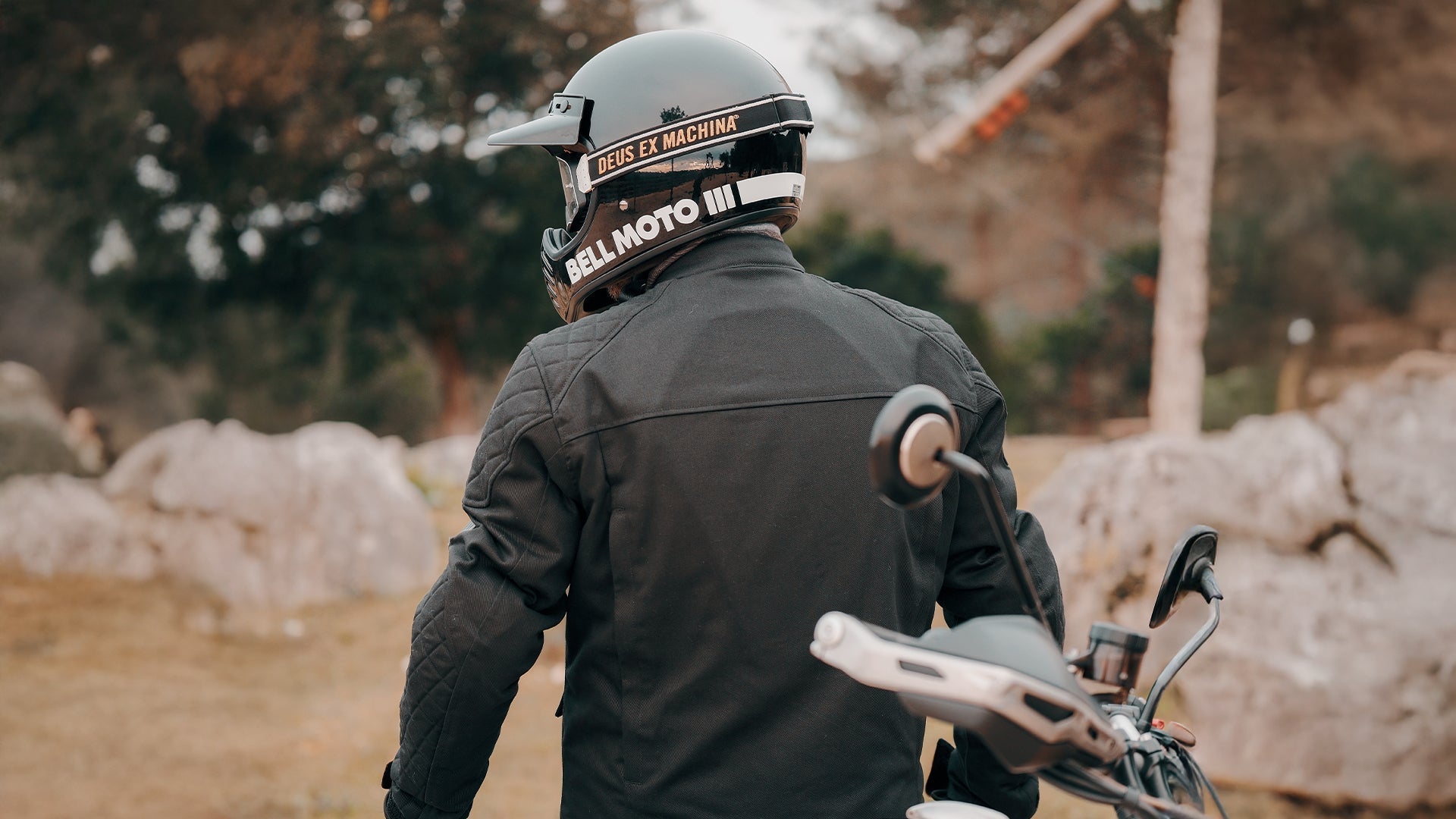Protective riding shoes are essential for motorcyclists, offering important safeguards against foot and ankle injuries during accidents. You'll want to look for features like reinforced toe boxes, ankle support, and impact-resistant materials. Key elements include slip-resistant outsoles, secure closure systems, and durable construction using leather or advanced synthetics.
CE certification guarantees compliance with safety standards. When choosing, consider your riding style, terrain preferences, and weather conditions. We’ll cover everything you need to know about protective riding shoes in this guide.
Key Takeaways
- CE certification and EN 13634 standard compliance indicate adherence to rigorous safety regulations for motorcycle riding shoes.
- Protective riding shoes incorporate slip-resistant outsoles for enhanced grip on various surfaces, improving rider safety.
- Proper fit and comfort are crucial, with considerations for toe box space, ankle support, and ventilation.
Why Protective Motorcycle Riding Shoes are Essential
Motorcycle riders must prioritize foot protection to prevent severe injuries during accidents or crashes. Protective riding footwear acts as a crucial barrier against road hazards, offering superior safety features compared to standard shoes. These specialized boots are engineered to withstand the unique demands of two-wheeled transportation.
Whatever your reasons for hitting the road on a bike, you want to keep donig it for many years. On the open road, your lower extremities face various risks, including impacts, scrapes, slides, and even thermal injuries from exhaust systems. High-quality riding boots incorporate reinforcement to protect you from these dangers.
Many protective riding boots adhere to stringent safety protocols, ensuring they provide adequate defense in real-world scenarios. When selecting gear, riders should look for certifications from regulatory bodies that oversee transportation safety standards.
Key Features To Look for in Protective Riding Shoes
When selecting protective riding shoes, you'll need to contemplate several critical features. Focus on the level of reinforcement, especially in high-impact areas, and examine the sole design for grip and durability.
Pay attention to the closure system for a secure fit, and evaluate the materials used for their protective qualities and comfort during long rides.
Reinforcement
Reinforcement provides impact protection and structural integrity in critical zones. Toe boxes have hardened inserts to shield against impacts and crush injuries. Reinforced heel cups prevent twisting and provide stability.
Ankle support mechanisms, like internal braces or external guards, help prevent sprains and reduce fracture risks. Look for details on how the riding shoes you find protect you in these areas.
Sole design
As a rider you also rely the sole for stability and safety. Features may include tread patterns for better traction and stability-boosting shank reinforcements.
High-quality soles use durable rubber compounds or synthetic materials engineered to withstand riding conditions. Good soles should reduce fatigue and minimize injury risk during long journeys or impacts. Keep in mind that repeated vibration and impacts can lead to issues with your joints later on. Manufacturers balance durability and flexibility in sole construction, often incorporating oil-resistant compounds for enhanced grip on slippery surfaces.
Closure Systems
Motorcycle riding shoe closure systems play a crucial role in protection and safety by ensuring a secure fit. Lace-up systems offer adjustability but can come undone during rides. Velcro straps provide quick fastening and allow for easy adjustments, but may loosen over time.
Buckles offer strong, reliable closures and are less likely to open accidentally. Zipper closures provide convenience but may compromise protection if not reinforced. Some shoes combine multiple closure systems for optimal security. A properly secured shoe prevents it from coming off during accidents, reducing the risk of foot and ankle injuries.
The closure system also helps maintain the shoe's position, ensuring that protective features like reinforced toe boxes and ankle supports remain in place during impacts.
Protective Materials
You’ll notice riding shoes use a range of materials to improve performance, durability, and safety.
- Leather, a traditional choice for men’s riding shoes, offers excellent abrasion resistance and durability, particularly in high-impact areas.
- Synthetic fabrics like Kevlar and Cordura provide superior tear and abrasion resistance while remaining lightweight.
- Composite materials, including carbon fiber, are increasingly incorporated into protective elements such as toe caps and ankle supports, offering exceptional strength-to-weight ratios and impact resistance.
- Reinforced areas in critical zones like the toe, heel, and ankle contribute to enhanced protection.
Material selection and placement within the shoe are crucial factors in determining overall effectiveness. Make sure you understand what types of materials a riding shoe uses as you’re shopping around.
Our Top Picks for Protective Riding Shoes
Some riding shoes offer better protection than others. Our top picks include the XZ002 and XZ005 models.
Breathable Protective Motorcycle Boots
Our Breathable Protective Motorcycle Boots XZ002 offer riders essential safety features without compromising comfort or everyday wearability. Protective features include reinforced toe caps and PP shells, safeguarding feet, ankles, and heels from potential impacts.
Slip-resistant rubber outsoles and reflective heel strips help you stay safe in various conditions. And with the side zipper you can put them on fast.
Rubber Sole Protective Motorcycle Shoes
The Rubber Sole Protective Motorcycle Shoes XZ005 provides a blend of safety, durability, and comfort for all-weather conditions. These boots feature a PU leather construction with breathable mesh, ensuring moisture control and day-long comfort. The anti-slip rubber outsole provides traction during rides, while a reinforced heel and toe area, complete with a gear shift pad, enhance protection.
Riders benefit from a TPU ankle guard for comprehensive coverage and a reflective heel element for low-light visibility. The windproof and water resistant properties make these affordable riding shoes appropriate for cold-weather use.
What Are the Different Types of Motorcycle Footwear?
Motorcycle footwear encompasses a range of protective options designed for different riding styles and conditions. Full-length boots offer maximum protection for sport riding and track use, covering feet, ankles, and lower legs with reinforced components.
Short boots provide a versatile solution for everyday riding, balancing protection with flexibility for urban and cruiser enthusiasts. Motorcycle shoes blend casual aesthetics with essential safety features, catering to short trips and city riding.
The industry continuously evolves, incorporating advanced materials and technologies like waterproof membranes, breathable liners, and innovative closure systems.
Considering all the major categories, riding shoes offer a good balance of freedom of movement and style without compromising safety features.
How To Choose the Right Riding Shoe for Protection
As you’re shopping around, consider your riding style along with the shoe’s protective features and fit.
Riding Style
Your preferred riding style can influence the choice of protective motorcycle footwear. Consider your specific techniques, terrain preferences, and environmental factors when selecting appropriate boots or shoes.
Off-road enthusiasts require robust ankle support and impact resistance, while street riders prioritize abrasion resistance and long-distance comfort.
Cornering techniques demand excellent lateral support, while frequent gear shifting necessitates reinforced toe areas. Weather conditions, ride duration, and terrain type further refine the selection process, ensuring optimal foot protection and comfort for various riding scenarios.
Protective Features
Safety and protection are paramount when selecting motorcycle footwear. Riders should prioritize shoes with reinforced toe boxes, ankle support, and impact-resistant heel cups to absorb shock and prevent injuries during accidents.
Slip-resistant soles are crucial for maintaining traction on various surfaces, while waterproofing ensures comfort in all weather conditions. Breathable materials enhance comfort during extended rides, and reflective elements increase visibility in low-light situations.
|
Feature |
Purpose |
|
Reinforced Toe |
Protects toes from impacts |
|
Ankle Support |
Prevents ankle twists |
|
Slip-resistant Sole |
Improves traction |
Comfort and Fit
Finally, look at comfort and fit when selecting riding shoes. If you purchase a pair online, you won’t get to try them on before buying. So, make sure the online store has a good return policy.
In terms of sizing, the toe box should provide a little wiggle room without allowing foot movement. The heel and instep should fit securely without discomfort. Your heel should not move up as you step, otherwise the shoe is too loose.
Proper fit is important for your safety, as ill-fitting footwear can decrease your control of the bike. It can also increase your risk of injury in an accident.
What Safety Considerations Apply to Protective Riding Shoes?
It’s good to be aware of CE certification and the EN 13634 standard and how they apply to motorcycle footwear.
CE Certification
CE certification ensures rider safety by guaranteeing protective footwear meets specific standards. This European Union-based certification is crucial when evaluating motorcycle or equestrian riding shoes. The CE mark indicates compliance with rigorous testing procedures, emphasizing the importance of certified gear in safeguarding riders.
Not all protective riding shoes offer equal protection. CE certification helps differentiate between those that meet safety requirements and those that don't. When selecting riding footwear, prioritizing CE-certified options ensures investment in gear that offers proven protection against potential riding hazards.
EN 13634 Standard
The EN 13634 standard is a subset of CE certification. The standard establishes crucial safety requirements for motorcycle riding footwear. It specifies requirements for impact resistance, abrasion resistance, cut resistance, and structural integrity. The standard ensures motorcycle boots offer adequate protection during accidents.
While certification guarantees a baseline of safety, riders should consider their specific needs when selecting footwear. Understanding this standard can help consumers make informed decisions when shopping for protective riding shoes.
How To Care for Riding Shoes
To maintain your protective riding shoes, you'll need to focus on three key areas: cleaning, conditioning, and inspection.
Cleaning
Clean riding shoes with mild soap and water, avoiding harsh chemicals. Dry thoroughly and apply leather conditioner if applicable. Remove insoles to clean separately. Proper cleaning maintains waterproofing, breathability, and leather integrity. It prevents degradation of protective elements like reinforced toe boxes and ankle supports, ensuring optimal safety during rides. Regular maintenance extends shoe lifespan and performance.
Conditioning
Leather conditioning prolongs the life and protective qualities of motorcycle riding shoes. The process begins after thorough cleaning and involves applying a specialized leather conditioner. Riders should select a high-quality product designed specifically for motorcycle footwear.
Using a clean cloth, work the conditioner into the leather with circular motions, focusing on high-wear areas like the toe box and heel. These regions are particularly vulnerable during aggressive maneuvers.
Allow the product to penetrate the leather for at least half an hour before buffing with a soft-bristled brush. This treatment restores essential oils, preventing cracks and maintaining flexibility.
Inspection
Regular motorcycle boot inspection ensures rider safety and footwear longevity. Before each ride, conduct a comprehensive examination of your riding shoes to verify compliance with safety standards. Check for wear indicators, structural integrity, and protective element effectiveness.
Inspection checklist:
- Evaluate closure mechanisms for functionality and security.
- Examine inner lining for material degradation and padding condition.
- Assess ankle support flexibility and stability.
Verify visibility elements like reflective materials. Replace riding footwear immediately upon discovery of significant damage or wear. Compromised motorcycle boots fail to provide necessary road protection.
Riding Shoes for Protection: Conclusion
The protective purpose of riding shoes can’t be overstated. Reliable riding shoes protect your feet and ankles against a variety of risks encountered on the road. By prioritizing features such as reinforced construction, abrasion resistance, and impact protection, riders can significantly reduce the likelihood of injury in the event of an accident. Investing in a quality pair of riding shoes is a wise decision that provides invaluable protection, ensuring that every journey is a safer one.
Protective Riding Shoes: FAQ
Below are a few frequently asked questions about protective riding shoes.
Can protective riding shoes be worn comfortably off the motorcycle?
You'll find many protective riding shoes offer style versatility, allowing comfortable off-motorcycle wear. They're designed with safety features that don't compromise walkability. However, always prioritize protection over fashion when choosing footwear for your rides.
Are there waterproof options for protective riding shoes?
Yes, there are many waterproof riding shoe options available. These guarantee your feet stay dry while maintaining breathability. Always prioritize safety features alongside waterproofing when selecting riding footwear.
How often should protective riding shoes be replaced?
You should replace your gear when you notice significant wear or damage. Key replacement indicators include worn tread, cracked soles, or compromised protective features. Also, CE certification only applies to the first five years of the product, so you may want to replace riding shoes after five years.
Can racing-style boots be used for everyday street riding?
Racing-style boots offer versatility for street riding, but you'll need to evaluate their comfort for extended wear. They provide excellent protection, though you may sacrifice some flexibility. Assess your specific needs for daily use and safety requirements.




